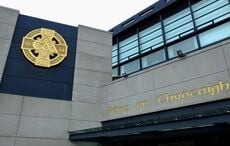One of the most extraordinary 'buried treasure' discoveries in recent years has an Irish flavor to it. A scrap metal dealer, who bought a golden egg at a US flea market, only discovered it was an ultra-rare Faberge egg worth around $25 million after doing some research online.
The unnamed buyer purchased the egg for $14,000 in the Midwest in the hope he could cash in on its scrap metal value. The dealer had in fact found one of the eight missing Faberge imperial eggs made for the Russian royal family in the 19th century.
A London antique dealer said the scrap metal entrepreneur bought the egg for about $14,000 thinking he could make a small profit by reselling the piece for its gold content. It turned out the jewel-encrusted piece was worth millions.
The deal to buy the Faberge egg, was done in a "potato field in Kerry," according to one of the people who played a vital role in the negotiations.
RTE Radio spoke to Kieran McCarthy from the London jewelers that sold the Faberge egg about its discovery and sale. He said, "The negotiations to buy the egg, which we subsequently did, were conducted in a potato field in Kerry overlooking the Atlantic."
"I could actually see a chicken house in the distance, I wasn't actually in the chicken house, I was in a potato field in Kerry. So there is an Irish flavor to this egg."
According to the Irish Examiner, the egg, which contains a Vacheron Constantin watch inside it, sits on a jeweled gold stand and was given by Alexander III to his wife Empress Maria Feodorovna in Easter 1887.
McCarthy, a director at Wartski the London-based Royal Warrant-holding experts on Carl Faberge’s work, flew to the small Midwest town where the owner lived so he could be sure the egg was genuine.
When McCarthy saw it on the owner’s kitchen table beside some cupcakes, he confirmed it was the lost Imperial treasure.
McCarthy told the Independent, “It’s the most incredible discovery. We have so many discoveries but none of them are as momentous as this.
“It has traveled from Imperial St Petersburg to the rust belt of America. It’s a story that deserves to be told because it could so easily have slipped away.
“For the Faberge community and the historical community, it is a wondrous event because the Easter egg is the ultimate target for every antique dealer and every enthusiast.”
He added, “It may never be seen again and it may disappear into the deepest, darkest vaults of a collector somewhere.”
The egg was last seen in public in March 1902 when it was shown at an exhibition of the Russian Imperial family’s Faberge collection in St Petersburg.
In the turmoil of the Russian revolution, the Bolsheviks confiscated the valuable egg from the empress.
It was recorded in Moscow in 1922 when the Soviets decided to sell it as part of their policy of turning “treasures into tractors”.




Comments